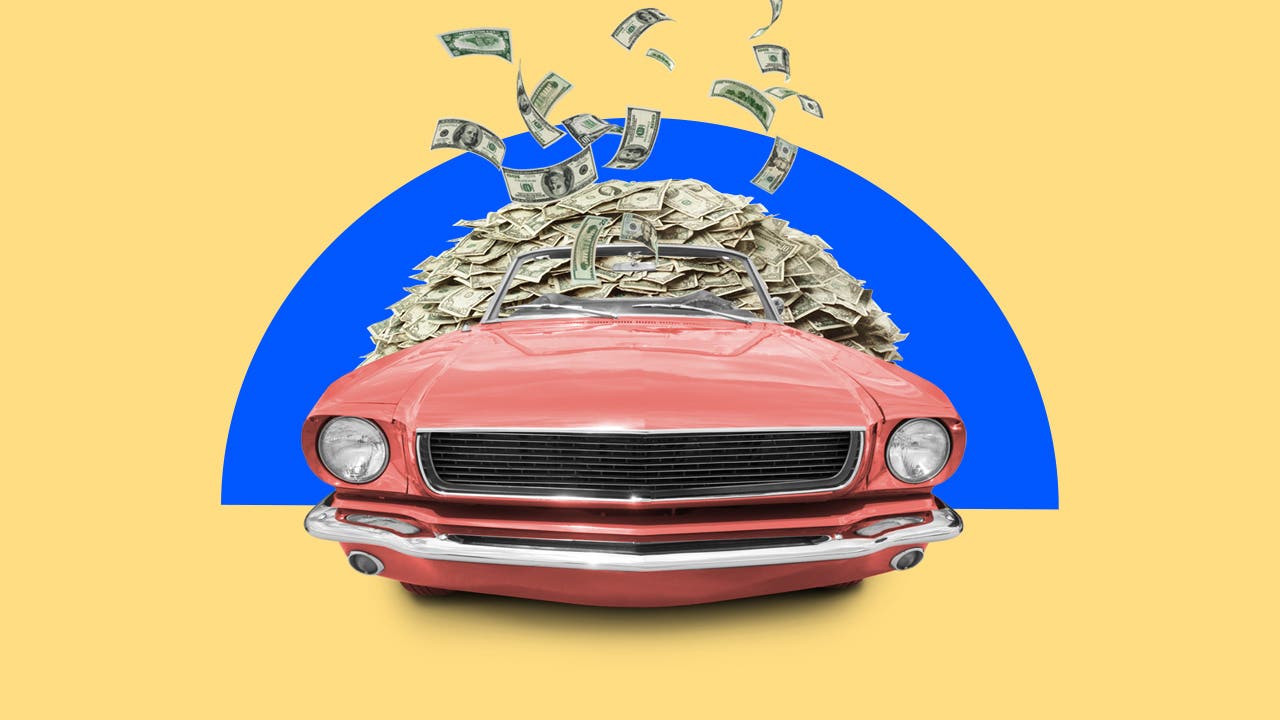Is your car payment too expensive for your monthly budget?

The Bankrate promise
At Bankrate we strive to help you make smarter financial decisions. While we adhere to strict , this post may contain references to products from our partners. Here's an explanation for .
Key takeaways
- Your monthly auto loan payments should not exceed 10 to 15 percent of your pre-tax take-home salary.
- Due to increased vehicle incentives, drivers may find relief when shopping for a vehicle this year.
- To secure the best deal, work to improve your credit score and consider making a sizeable down payment.
With the new year upon us, many are reviewing their budgets. Inflation has shifted spending across the board and squeezed many a pocketbook.
This is especially true for drivers who have been resigned to steep rates over the past year. Shockingly, almost 18 percent of new-vehicle borrowers had monthly payments of over $1,000 in the fourth quarter of 2024, according to Edmunds. If you are trying to avoid monthly payments in the thousands and want a better grasp on your finances this year, consider how your auto loan payment fits into your budget.
Ideal payment based on your income
According to Karen Bennett, senior consumer banking reporter at Bankrate, your vehicle monthly payment should not exceed 10 to 15 percent of your pre-tax take-home salary. Below are some examples for different salaries.
| Salary | Maximum monthly car payment (10%) | Maximum monthly car payment (15%) |
|---|---|---|
| $20,000 | $167 | $250 |
| $40,000 | $333 | $500 |
| $60,000 | $500 | $750 |
| $80,000 | $667 | $1,000 |
| $100,000 | $833 | $1,250 |
To find this range for your salary, divide your annual pre-tax take-home salary by 12. Multiply that number by 0.1 to find the low end of the range or 0.15 to find the high end.
For example, the average median salary in early January was $58,136, according to BLS data.
- $58,136 ÷ 12 = $4,844.67
- $4,844.67 x 0.1 = $484.45 and $4,844.67 x 0.15 = $726.70.
So, the maximum average monthly payment for that salary is between $484 and $727.
One effective way to ensure your finances stay in check is to follow the 50/30/20 rule, explains Bennett.
“You’ll allocate half your paycheck to essential expenses like rent, food and transportation,” she says. “Another 30 percent will go toward nonessentials like dinner out and streaming services, and 20 percent will be put into savings.”
What to do if your car payment is too high
If your monthly payment is overextending your budget, there are ways out.
Consider the following options to take if your vehicle payment is too expensive.
- Refinance your loan: Refinancing your vehicle loan is taking out a new loan to replace your current one, but with rates and terms that better fit your budget. It’s smart to calculate potential savings ahead of time to find one that best suits your needs.
- Trade in your vehicle. This year will be much friendlier to borrowers interested in trading in their vehicle compared to last year. By trading in your car, you can get a less expensive vehicle, thus reducing your monthly costs. Consider working directly with the dealership you purchased from to secure the best deal.
How much should your next vehicle cost?
Beyond calculating your ideal monthly payment, you can also use the above guidelines to calculate the amount you can afford to finance the next time you purchase a new or used car.
Use tools such as Edmunds’ “How Much Can I Afford” calculator to see how expensive a car you can afford based on your target monthly payment. Here’s how to use it.
- First, input the monthly payment you calculated in the last section. Using this as your guiding light, you can ensure you do not over-extend your salary when paying for your vehicle.
- Estimate your interest rate based on industry averages for your credit score. The better your credit score, the more competitive your interest rates will likely be.
- Finally, try different loan terms to see how they impact the amount you can afford. Longer terms mean a lower monthly payment (but more interest paid over time).
If you plan on trading in your old vehicle, include it as a down payment. A larger down payment offsets your monthly payment. According to most recent Edmunds data, the average down payment for a new vehicle was about 15 percent of the purchase price.
However, determining how much car you can afford requires thinking beyond the sticker price. While it is essential to stay within budget, vehicles cost more than just your monthly loan payment. You’ll also pay for maintenance, insurance, fuel and more. For example, an inexpensive vehicle might be appealing, but if the vehicle isn’t reliable repairing it can cost you more in the long run.
As a rule of thumb, your total monthly cost should not exceed 20 percent of your monthly payment. Preview your expenses for a given car with a tool like Edmunds’ “True Cost To Own” estimations.
While crunching the numbers may feel like a lot of work, it helps you purchase a vehicle within your budget and reduces your risk of falling behind and having your vehicle repossessed.
Will car payments be higher in 2024?
If you held off on buying a new car in 2023, you may have better options in 2024.
According to Ivan Drury, director of insights at Edmunds, drivers will find relief. Vehicle prices are lower than a year prior, though still above pre-pandemic prices. Two leading causes are increases in vehicle inventory and available dealer incentives.
Vehicle incentives took the backseat throughout 2023. Dealerships didn’t have room to offer deals due to their already low inventory levels. But new vehicle inventory surpassed 2.5 million units in December — the highest level since spring of 2021, according to Cox Automotive — and incentives have followed.
However, not all dealerships will offer equal financial benefits. Drury advises shoppers to be brand-agnostic when shopping this year.
“Having familiarity with a brand or a specific model provides that level of confidence with people,” he says. “Like, hey, this is my fifth Camry, right? Well, Camrys are not always going to have the best incentives on it. Maybe look at a competitor vehicle.”
Unfortunately, even with incentives and fuller dealership lots, cheap cars are still rare.
“American automakers really killed off anything below 20k; it just doesn’t exist from their lineup,” Drury says.
This is true even for used cars. The average price of a used vehicle in December was $26,091, according to Cox Automotive.
The year ahead is not all bad news for shoppers. One especially positive sign for shoppers is the return of more incentives, reflected in lower APRs for drivers, Edmunds shares.
Related Articles




Is your commute costing you? How commute time affects your auto loan balance